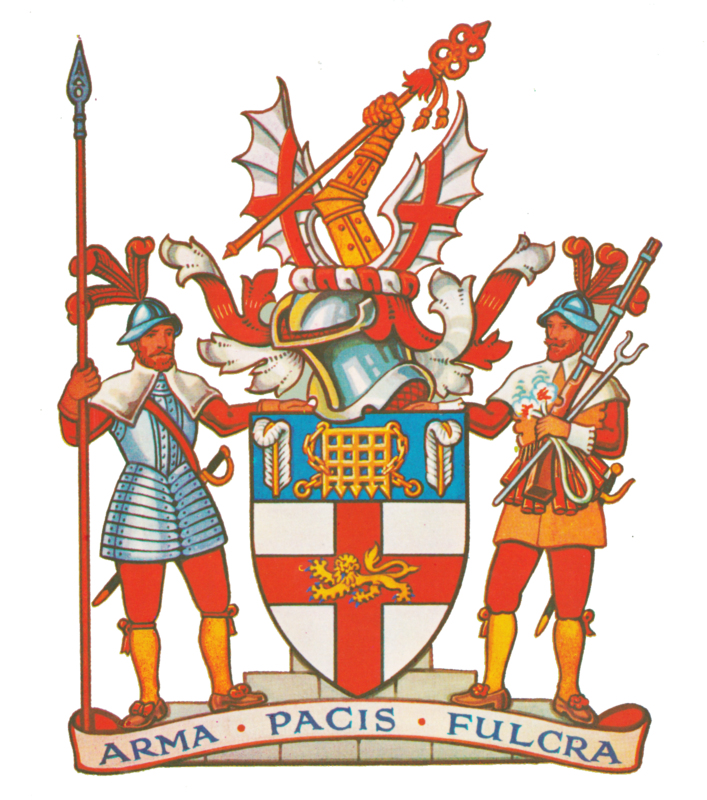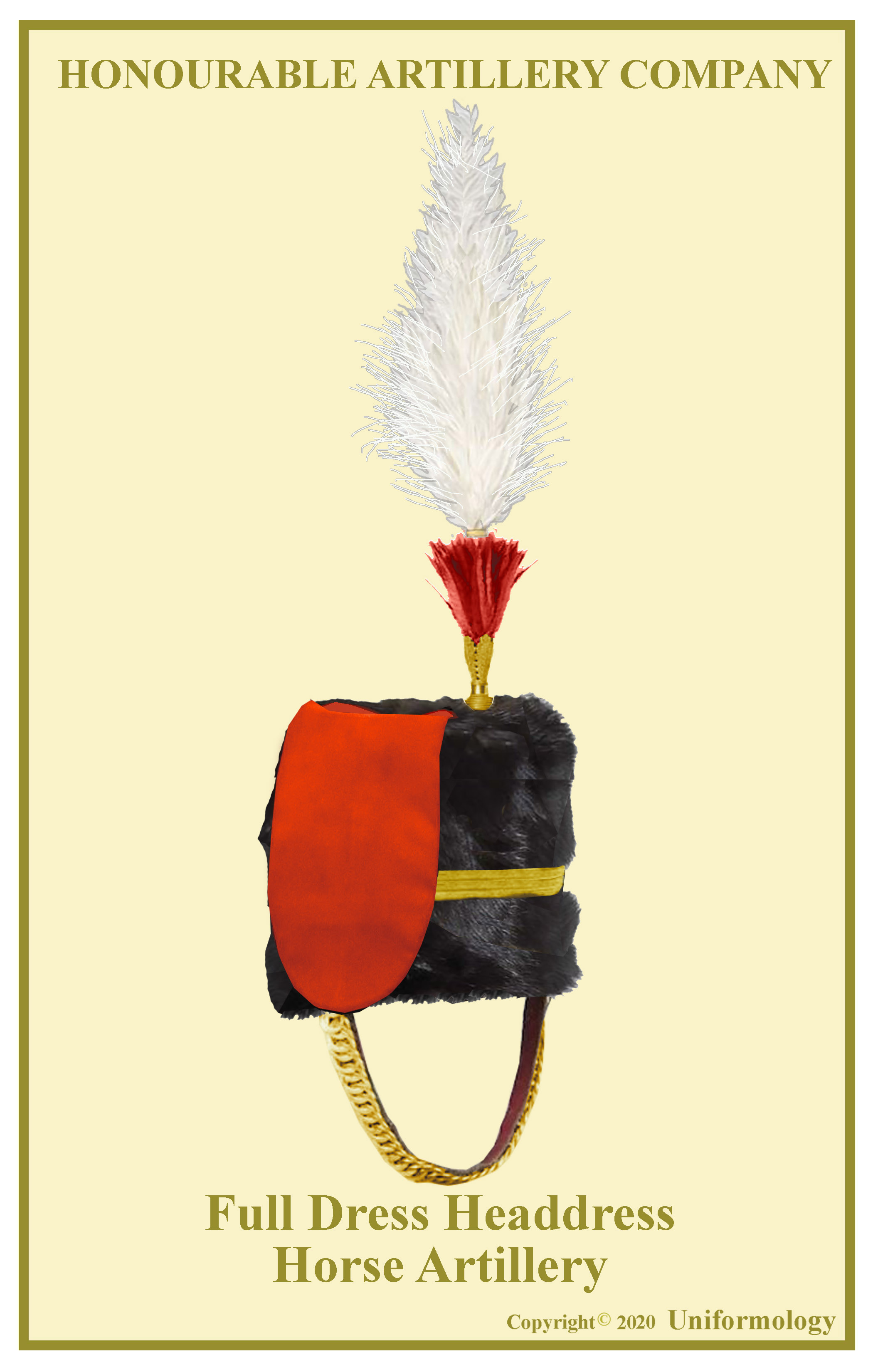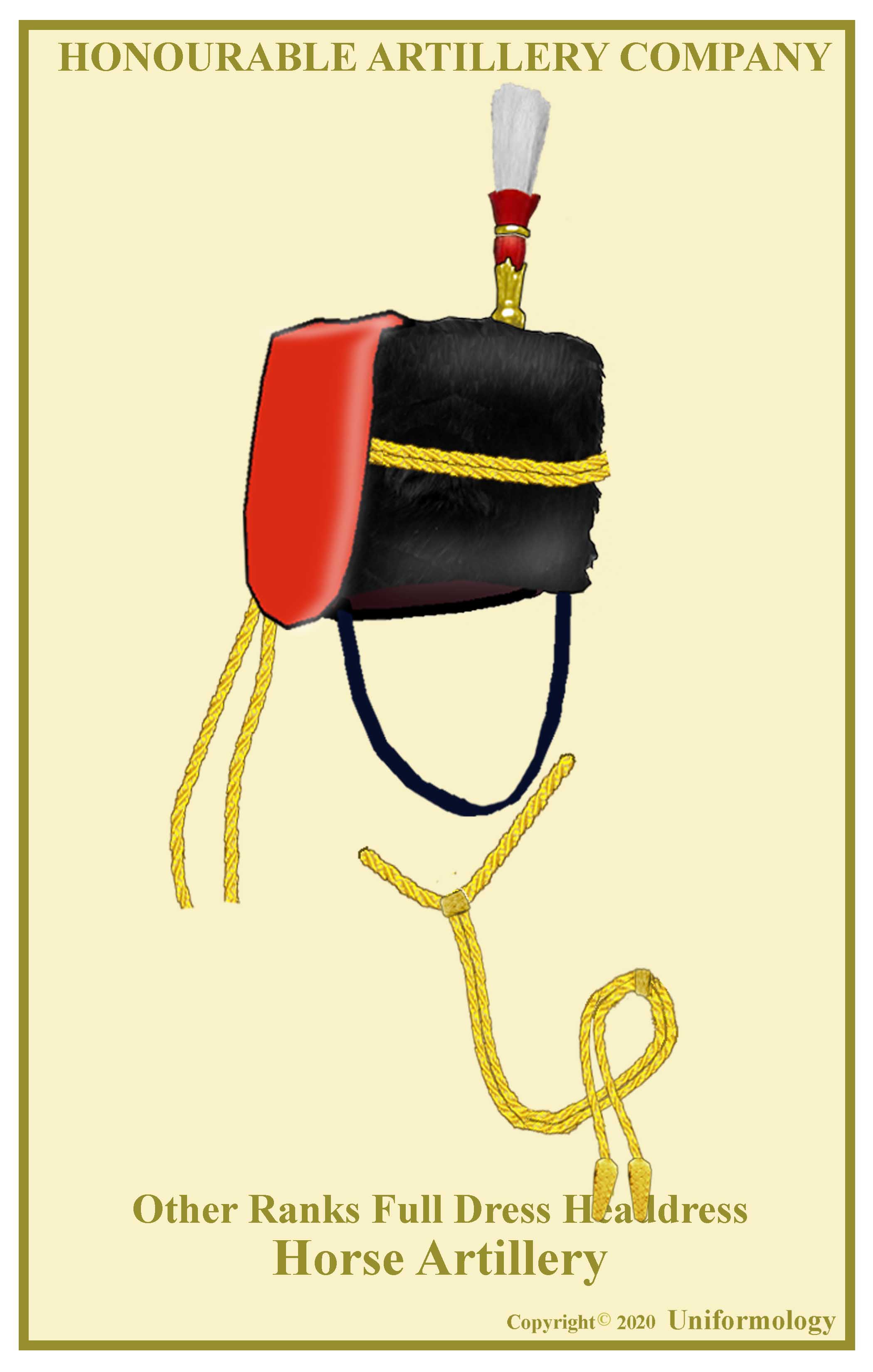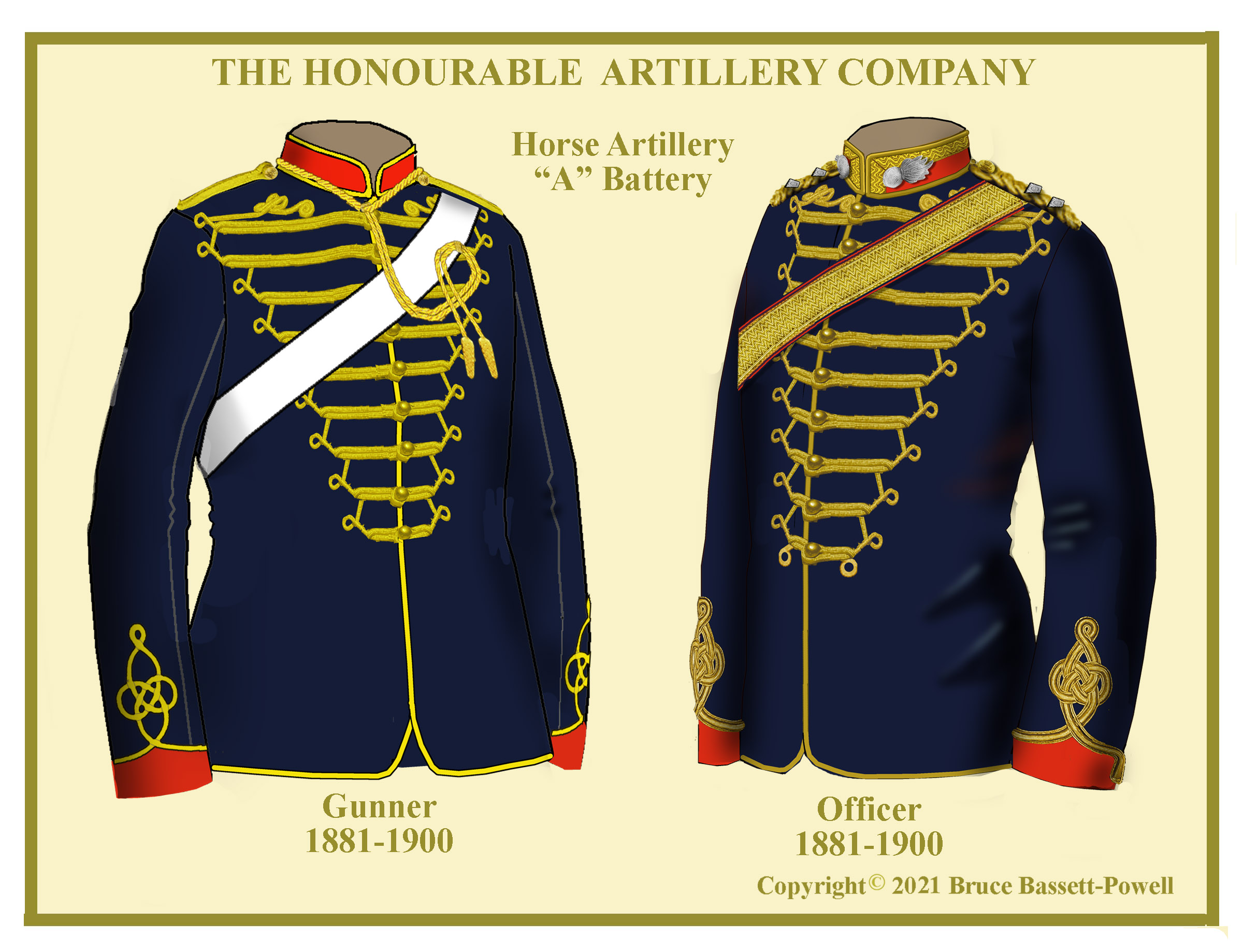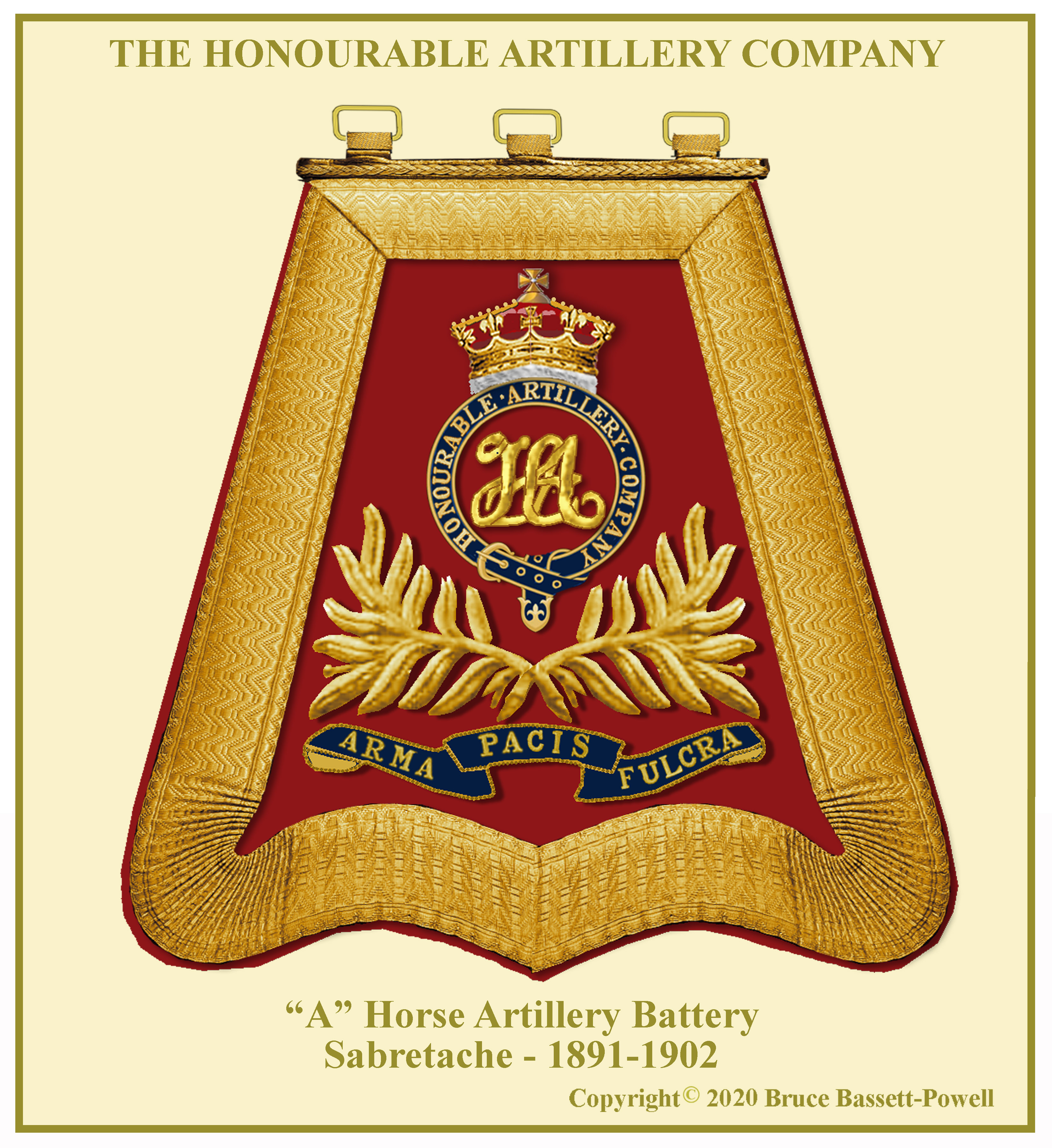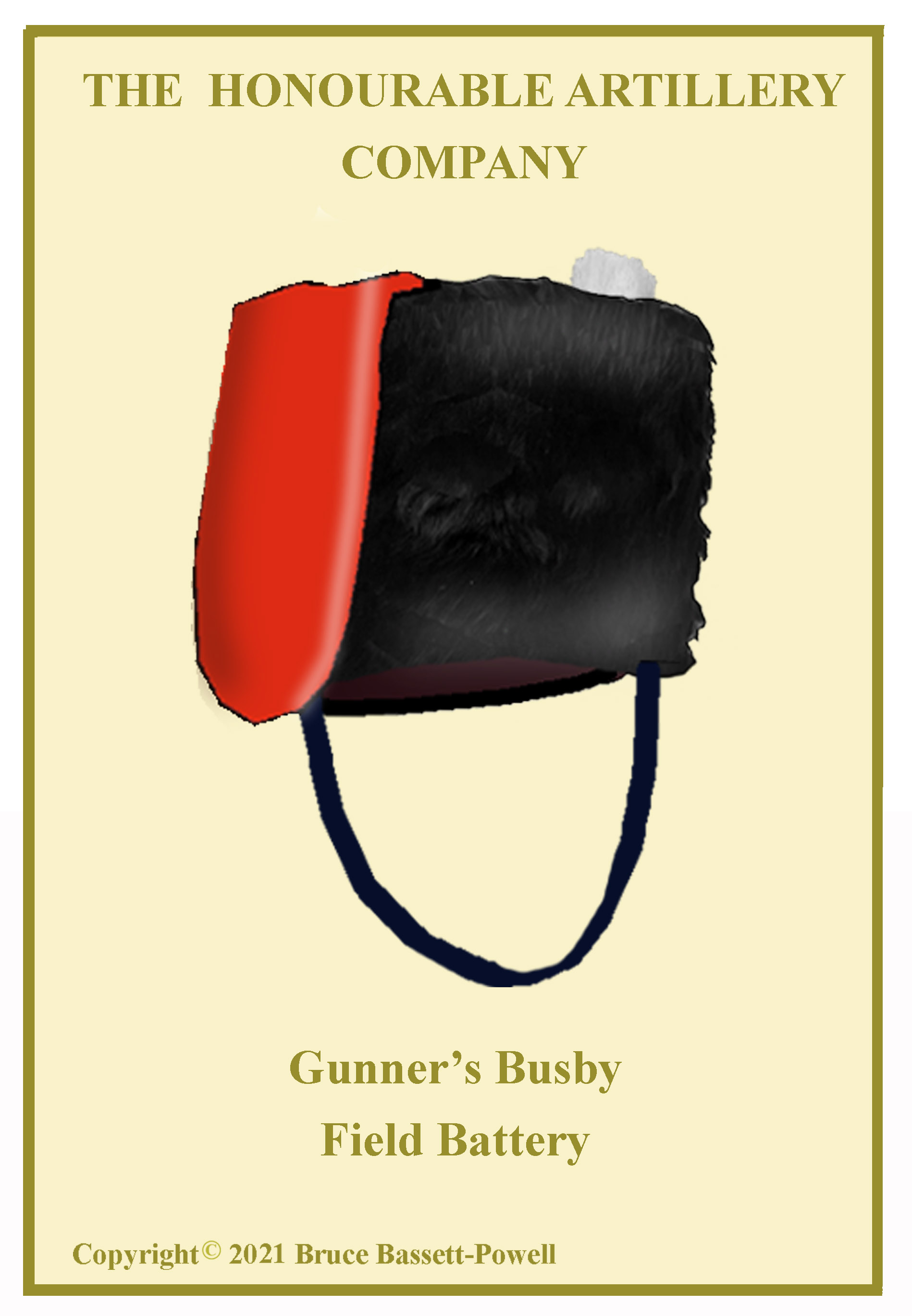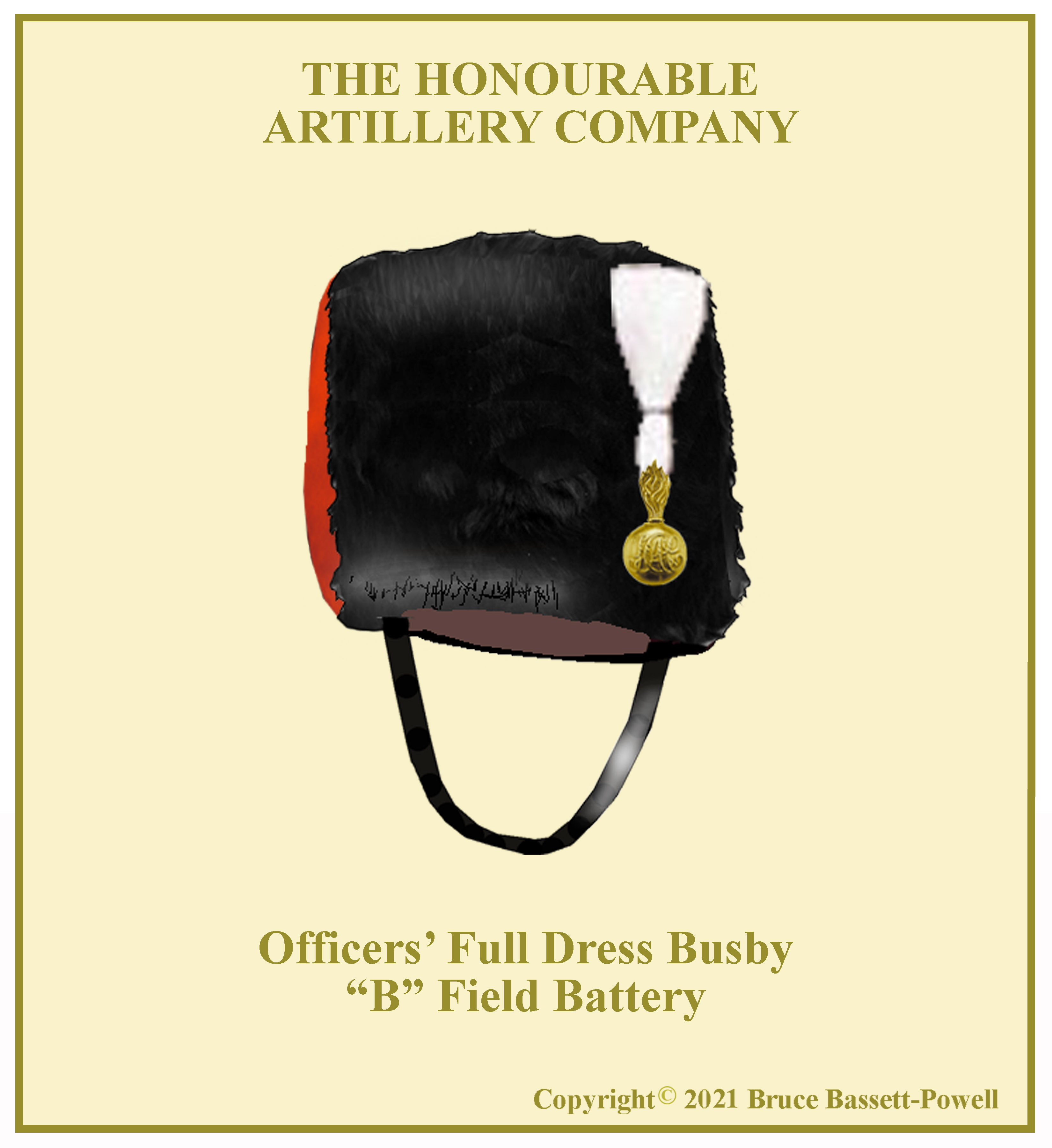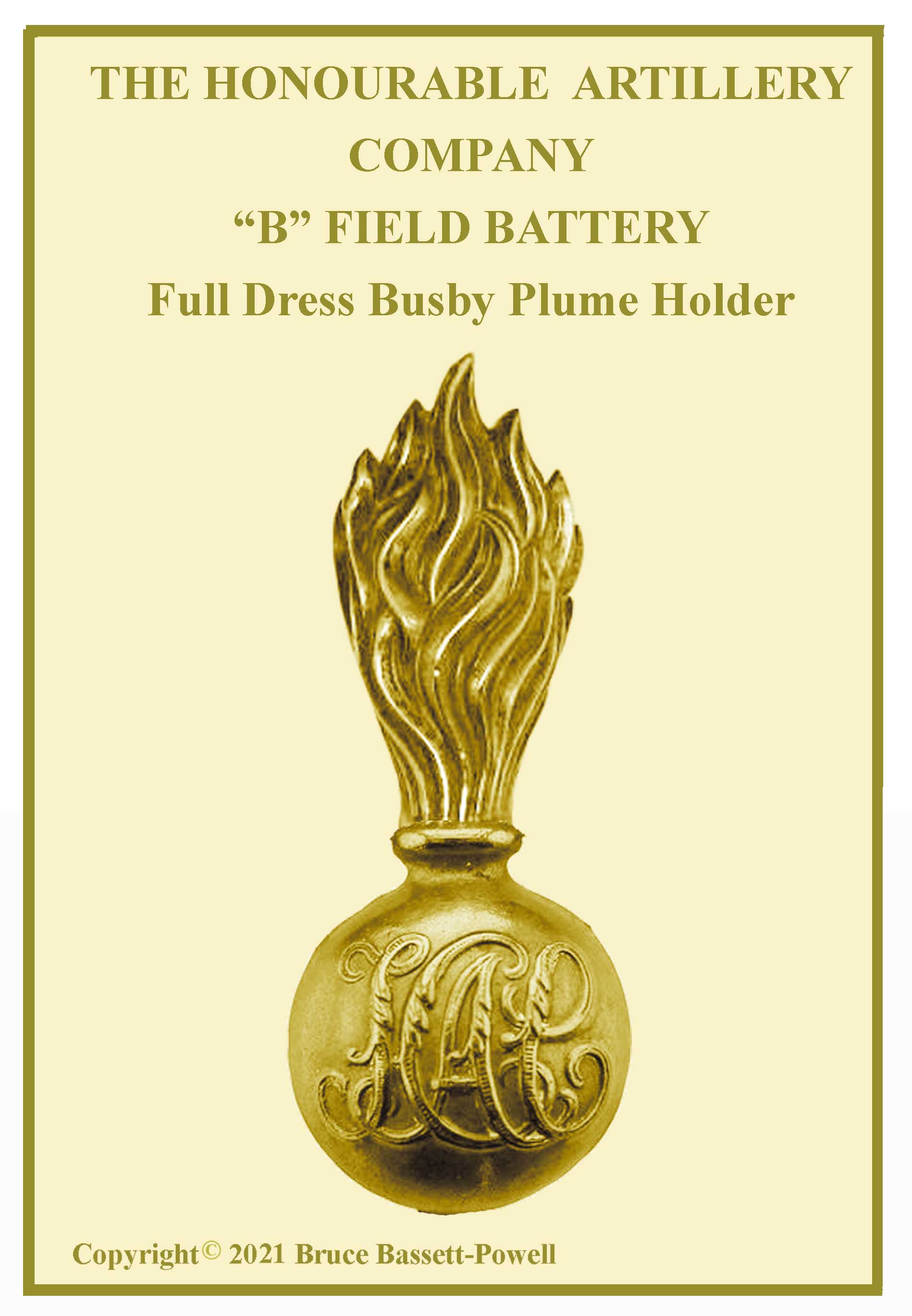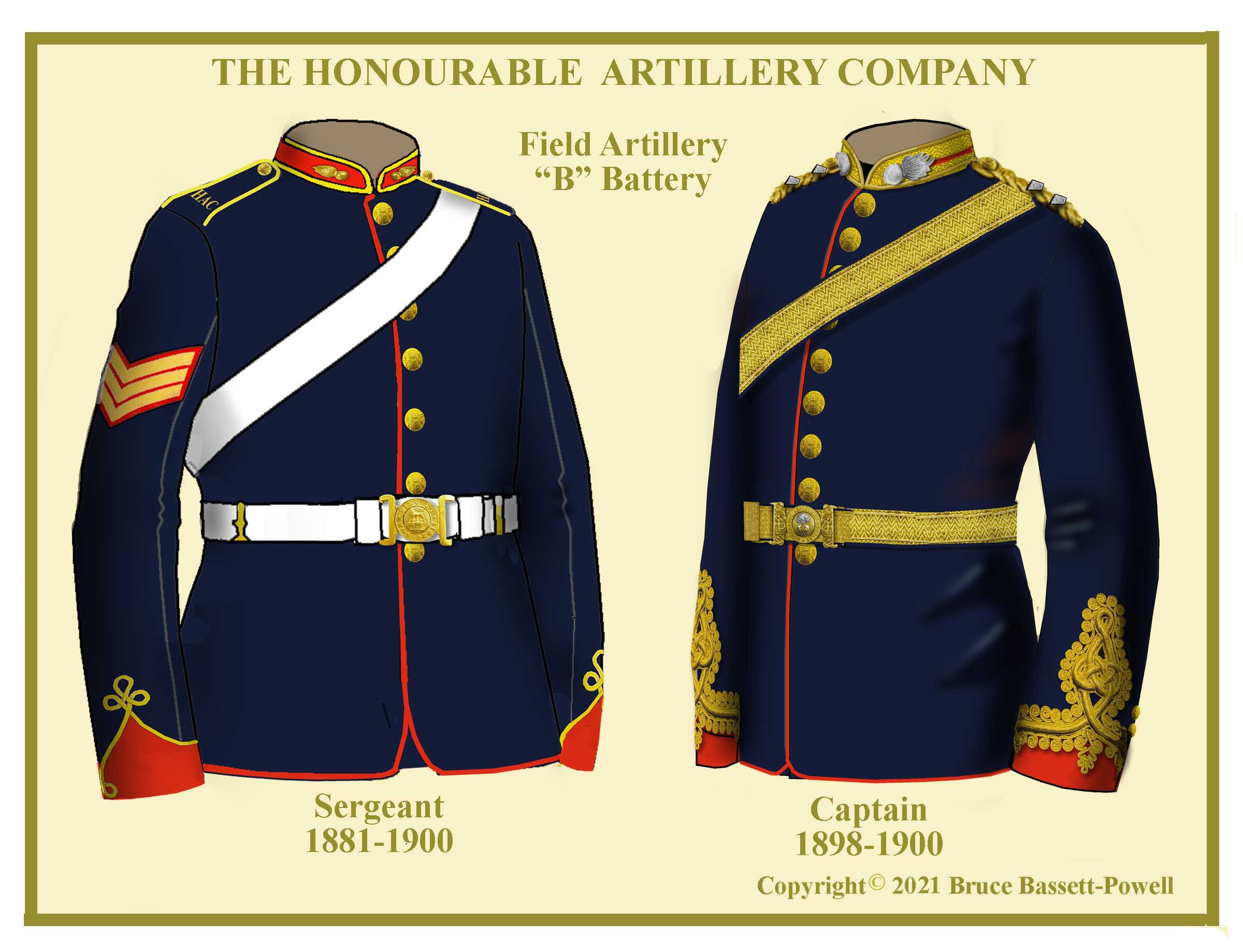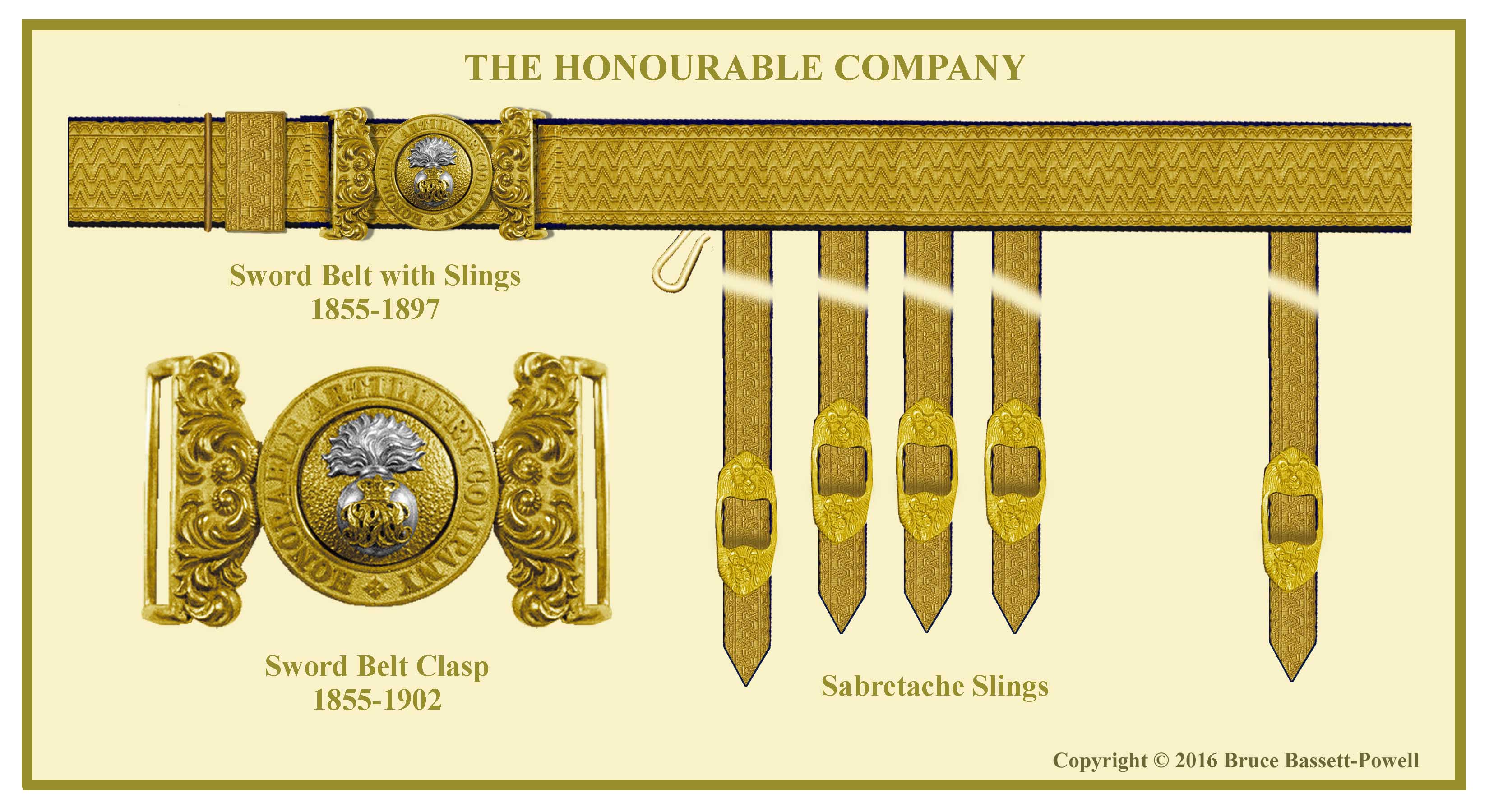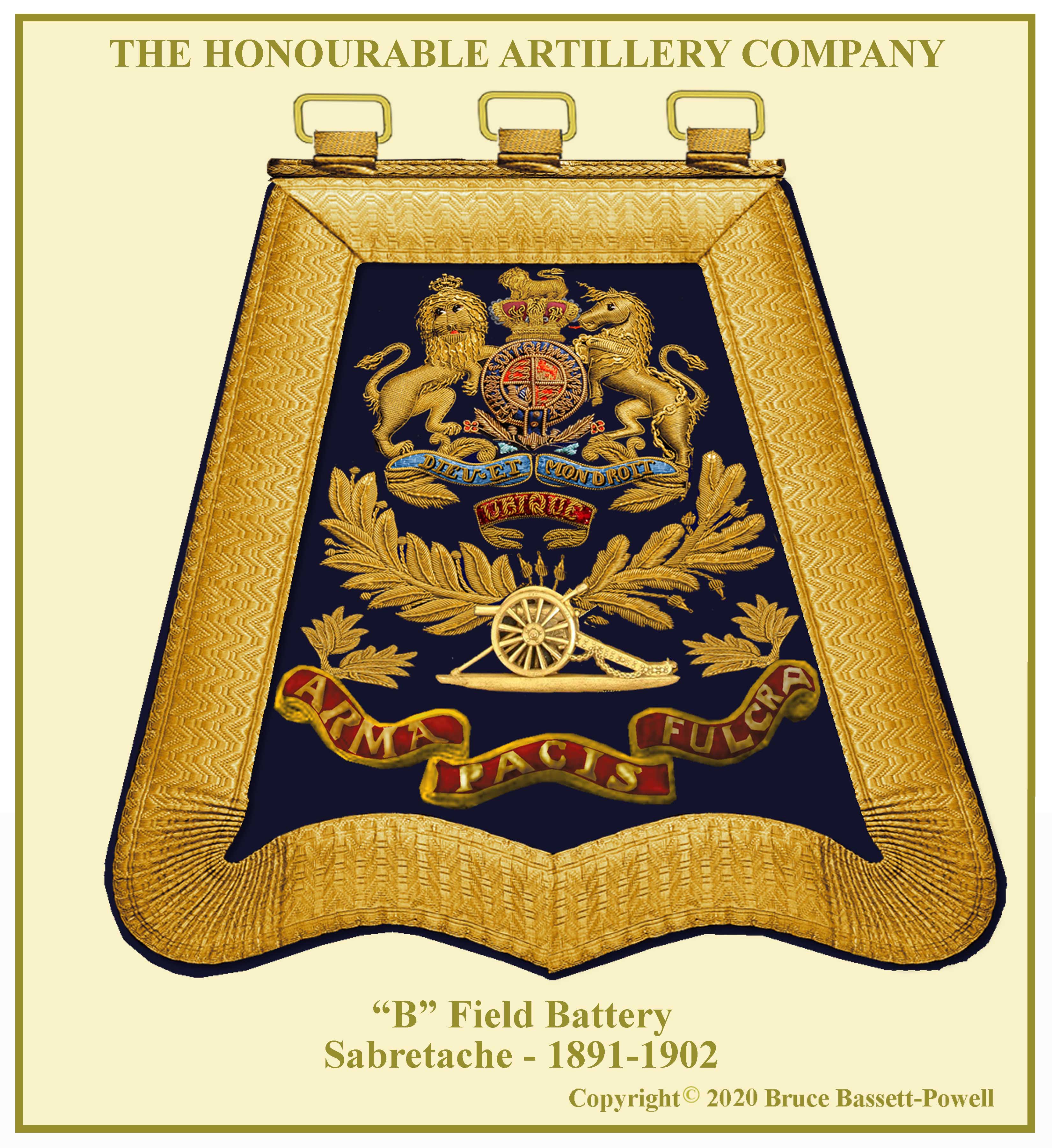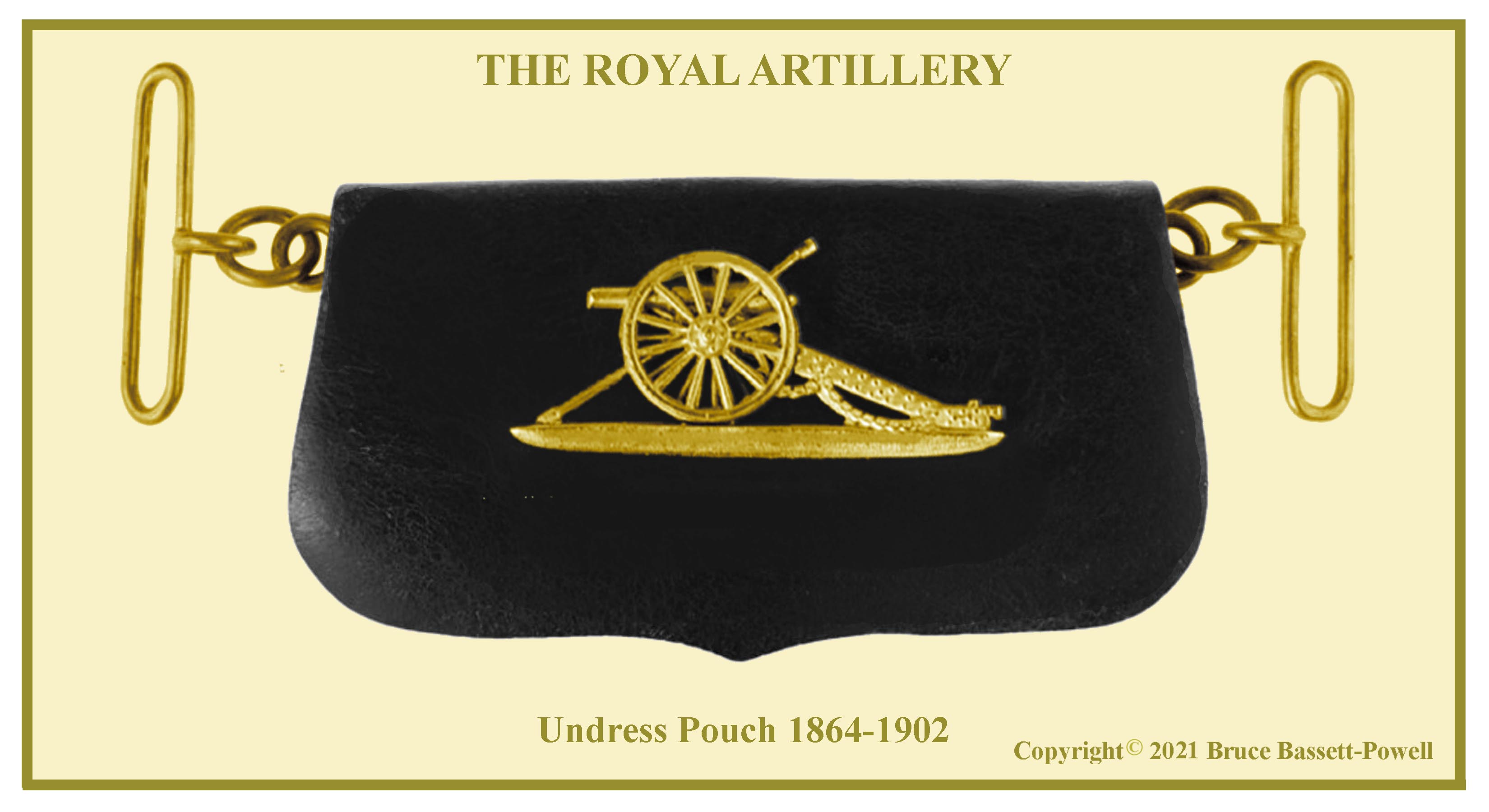Insert Headline
THE HONOURABLE ARTILLERY COMPANY
Insert text here.
UNIFORMS, ARMS & EQUIPMENT - ROYAL ARTILLERY
NOTE: THIS STUDY DOES NOT INCLUDE UNIFORMS OF THE INFANTRY ELEMENT OF THE H.A.C.
On August 25th 1537 King Henry VIII OF England placed his seal on a charter establishing in perpetuity “The Guilde of St. George of London”, a Fraternity of gentleman archers who trained with “longbowes, crossbowes and handgonnes”. In those days, “Artillery” described any projectile, be it arrow or shot. It was referred to as “The Artillery Company” in 1658 and gained the title “Honourable” in 1685. It is the oldest military institution in the United Kingdom and one of the oldest in the world. In 1638, Sir Maurice Abbot granted the company use of Bunhill Fields Burial Ground consisting of twelve acres on City Road, (known today As Armoury House and Gardens in Finsbury). In Elizabethan times, with the threat of the Armada looming, the company provided officers for the Trained Bands of London and members of the company fought on both sides during the Civil War. In 1780, the Company assisted the city in quelling the “Gordon” anti-papal riots in London. In the same year, an artillery Division was formed and at the same time, the City presented the Company with a pair of 3 pounder brass cannons.
From 1799, the company consisted of an Artillery and an Infantry component. The Artillery in blue coats and the infantry in scarlet. In 1804 both divisions wore the Tarleton style helmet with plume. From this point the company strived to wear uniforms which conformed to the regular army. In 1830, King William IV decreed that the Infantry division of the H.A.C. should wear the uniform of the Grenadier Guards in every respect save that the lace should be silver instead of gold. (Bearskins were not adopted until 1855). The Artillery Division retained its blue uniforms with gold lace*.
The 1860s were quite consequential for the Company: In 1860 the company was transferred from the jurisdiction of the Home office to that of the Secretary of State for War. That same year a troop of Horse Artillery was formed, known as Jay’s Troop. (which was disbanded in 1869). It had worn uniforms similar to that of the R.H.A. During this period, the Light Cavalry troop was formed. The troop wore the contemporary yeomanry Hussar uniform in blue with scarlet busby bag and facings with white frogging on the tunic and double white stripes on the breeches. Officers wore silver lace. In 1861, the Prince Consort died. He had been Captain-General since 1843. On the day of his funeral, the Artllery division fired 43 guns at the grounds and the Company decided that the Drill Hall should be renamed “The Albert Room”. Queen Victoria quickly signified that she would like to appoint the Prince of Wales as Captain-General and Colonel of the Company; a request that was approved
In the early 1880s, the Company’s fortunes fell alarmingly. Lord Wantage, who commanded the Company at the time, reported to the War Office that The Company was not up to the military standards required. In addition, it appeared that irregularities involving payments to certain NCOs on the side, prompted serious disciplinary action to be taken. Another, more disturbing turn of events came in 1888 when a decision by the Company’s Court involving payments to the Commanding Officer was voted down. The Duke of Portland (Lord Wantage’s successor), now reported to the Secretary of War that there was a serious disciplinary issue within the Company. The War Office issued an order that all the Company’s arms should be withdrawn. Subsequently all the small arms and ammunition were removed and the Guns sent to Woolwich.
In 1887, the ancient issue of precedence came to the fore. At a review, the Royal Naval Artillery Volunteers (See Plate 24) claimed precedence over the HAC based on their attachment to the Royal Navy. Queen Victoria had previously affirmed that the HAC took precedence immediately after the Regular Army and before the Militia and Yeomanry, which settled the matter.
The outbreak of the South African War in 1899 saw an outpouring of volunteers, especially after “Black Week”**. A great number of HAC members signed up. Most of the Infantry Division joined the CIV (City Imperial Volunteers) Mounted Infantry unit, providing No.1 Section of No. 1 Company. In February 1900, the Field Battery with 84 gunners arrived at Cape Town. While the mounted infantry company took part in the advance to Pretoria and fought valiantly at the Battle of Diamond Hill, the Field battery served in the Transvaal during the Guerilla campaign. In all, 193 men served during the war and four were killed or died of wounds and thirty were wounded.
During the Great War, the infantry division (expanded to 3 battalions) fought in France, Flanders and Italy and the Artillery Division consisting of two batteries served in the Middle-East, Egypt and Palestine. Three additional batteries served in France during the latter part of the war and two in Italy. 1,657 members of the HAC lost their lives in the Great War and 3 VCs were awarded.
During the Inter-War period, the HAC, now a part of the Territorial Army, replaced the Royal Artillery at the Tower of London, (Stationed at the Tower from time out of mind). From that time the HAC have fired salutes for all great occasions. In July 1938, the HAC took over public duties at Buckingham Palace and other London venues.
The Second World War began for the HAC with early preparations. They formed the 86th (HAC) Heavy Anti-Aircraft battery for the defence of London. On the first day of the War, they were manning their guns. The HAC had long received the role of Officer training (OCTU) and continued this process well into the duration of the war. In the course of the War, the 11th, 12th and 13th (HAC) Regiments were formed The 11th and 12th fought at El Alamein and North Africa. Subsequently serving in Italy while the 13th advanced through the Netherlands and northern Europe. Over 700 HAC members were killed during the war which included those serving with other regiments or units.
When the Territorial Army was reconstituted in 1947, the H.A.C. as part of that was again placed in precedence of all Volunteer units even when it became the T.A.V.R.
Since 1947 it has become a valuable part of the British Army providing a combat reconnaissance role. It also has provided Special Constabulary element to the City of London Police. providing security on some occasions. Today (from 2019) it is assigned to the 1st Intelligence, Surveillance and Reconnaissance Brigade, with an establishment of over 400 soldiers. They are most visible parading at the Lord Mayor’s Show every November.
During the Inter-War period, the HAC replaced the Royal Artillery at the Tower of London, (Stationed at the Tower from time out of mind). From that time the HAC have fired salutes for all great occasions. During the Inter-War period, the HAC, now a part of the Territorial Army, replaced the Royal Artillery at the Tower of London, (Stationed at the Tower from time out of mind). From that time the HAC have fired salutes for all great occasions. In July 1938, the HAC took over public duties at Buckingham Palace and other London venues.
The Second World War began for the HAC with early preparations. They formed the 86th (HAC) Heavy Anti-Aircraft battery for the defence of London. On the first day of the War, they were manning their guns. The HAC had long received the role of Officer training (OCTU) and continued this process well into the duration of the war. In the course of the War, the 11th, 12th and 13th (HAC) Regiments were formed The 11th and 12th fought at El Alamein and North Africa. Subsequently serving in Italy while the 13th advanced through the Netherlands and northern Europe. Over 700 HAC members were killed during the war which included those serving with other regiments or units.
When the Territorial Army was reconstituted in 1947, the H.A.C. as part of that was again placed in precedence of all Volunteer units even when it became the T.A.V.R.
Since 1947 it has become a valuable part of the British Army providing a combat reconnaissance role. It also has provided Special Constabulary element to the City of London Police. providing security on some occasions. Today (from 2019) it is assigned to the 1st Intelligence, Surveillance and Reconnaissance Brigade, with an establishment of over 400 soldiers. They are most visible parading at the Lord Mayor’s Show every November.
*Early in William IVth’s reign he wanted to have the entire British Army to be clothed in scarlet, regardless of corps. This did not go down well. Although several cavalry regiments such as the light dragoons did comply (some Hussar regiments adopted a scarlet pelisse), the Royal Artillery balked!
** The defeat of British forces in December 1899 at Stormberg, Magersfontein and Colenso, (known as “Black Week”) caused great dismay in Britain. A call for volunteers received an enthusiastic response.
UNIFORMS
The Horse and Field batteries of the H.A.C. wore uniforms that certainly identified them as “Artillery”. The Horse Artillery troop (Jay’s) that was formed in 1861 wore a uniform that was similar to that worn by the Royal Horse Artillery. It was re-adopted in 1891. The Busby was the same (except for the scarlet base to the plume).
Pouch Belt and Sabretache
The pouchbelt and sabretache were worn by officers in the 1861 Horse battery. Both were taken up again by A battery in 1891. Note the scarlet Morocco leather backing to the pouchbelt and sabretache, the latter with a scarlet silk face and gold lace laurel leaves on each side below a blue garter edged gold with the name of the regiment on the garter. Within the Garter the HAC monogram in gold embroidery. Below the laurel wreath the Motto of the H.A.C. on three blue scrolls edged in gold. We have not found an example of a pouch with embroidered decorations, but a black patent leather pouch with a brass gun on the flap was worn. (Whether in undress or full dress is not immediately clear.)
Tunic & Netherwear
Instead of the short jacket of the RHA, the Horse Artillery (A Battery) wore a blue tunic with scarlet collar and cuffs. The loops across the front went down to the waist. Officers had loops of round back gold cord while the other ranks wore yellow. The stripes on the pantaloons and trousers were the same as for the Royal Artillery. The grenade badges on the collar were worn only by officers. Officers had gold lace stripes in full dress and scarlet in marching order and other undress duties. Other ranks had scarlet stripes.
"B" Field Battery
The Field battery wore busbies of the same pattern worn by the Royal Artillery 1856-1878. it included the white plume with grenade socket worn on the left side.
The grenade plume holder was (presumably) worn by all ranks. The monogram of the HAC was on the ball of the grenade.
Belt and Sword Slings
The belt clasp was a special pattern for the HAC. It was worn by officers of the Field battery only. Both the swordbelt and pouchbelt had blue morocco leather backing. Other ranks wore white belts with the universal clasp.
NOTE: THE H.A.C. HAS NEVER BEEN A PART OF THE ROYAL ARTILLERY
Pouch
The Field Battery officers wore the same pouch as the RA undress pouch with the "Gun" on the flap.
Sabretache
The Field Battery officers carried a sabretache of Regimental pattern with a similar appearance to the regular RA. The interesting difference is the use of "UBIQUE" on the scroll beneath the Royal Arms. This was never an element used by the HAC. The RA Motto on the lower scrolls has been replaced with the HAC motto.
NEXT:
THE VOLUNTEER ARTILLERY
The “B” Field battery wore a uniform reminiscent to the Royal Field Artillery in about 1875. The immediate difference was the scarlet cuffs.
I am indebted for the assistance given to me on uniform details for this project by Justine Taylor, Archevist of the HAC

